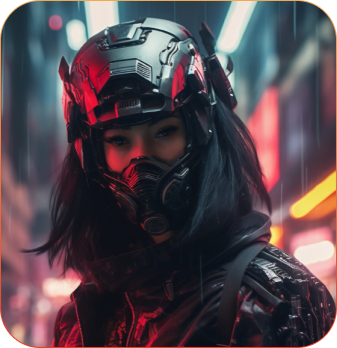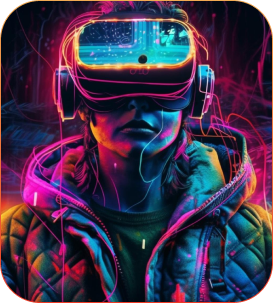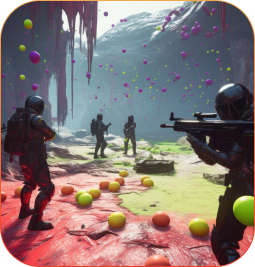- Learn to create concept Game Art, Storyboard, Digital Paint, Matte paint, Crate props, environment and character.
- To provide students with a foundational understanding of the principles and concepts specific to the field of game art.
- To teach the fundamental principles of computer graphics, including pixel manipulation, rendering, and image processing.
- To train students in the art of creating organic and character models with a focus on topology, realism, and aesthetics.



The learning objectives for advanced game art and design encompass a broad range of skills and knowledge that are crucial for individuals aiming to excel in the field of game development. Develop a deep understanding of fundamental art principles such as color theory, composition, perspective, and visual storytelling. Proficiently use industry-standard 3D modeling software to create complex 3D assets, characters, and environments. Acquire expertise in high-resolution sculpting using tools like ZBrush for creating intricate character and prop models.
Develop skills in character concept art, design, and character sheet creation, ensuring the consistency and appeal of in-game characters. Create immersive game environments by mastering level design, terrain modeling, and the use of assets like buildings, props, and terrain textures. Become proficient in using game engines like Unreal Engine or Unity, including asset import, scene setup, and scripting for interactivity.
Master the art of conveying narrative and storytelling elements through gameplay, level design, and environmental storytelling. Create a professional portfolio showcasing a diverse range of high-quality game art and design work that demonstrates your skills and creativity.
- Increase design and visualization skills
- Learn complete Game Art production pipeline
- Continuous evaluation through examination, competitions and activities
- 3D Game artist
- Character artist
- Game designer and animator
- Game environment artist
- 3D Game designer
- Game Level designer
In this program students will learn how to create advanced visual elements for game, such as detailed human and animal sculpting, convert high to low poly characters, advance texturing, presenting the assets in Engine and creation of foliage, emitters and particles. Students will also learn how to design levels in a game.
Student will learn how to research and then design advance game art which are needed to create any 3D game. The high-end equipment, practical exposure and mentors will inspire the student to learn in very professional atmosphere.
Student will walk away with a rich portfolio comprising various game assets and characters. Their portfolio will be a gateway to join the Game art design studio / firm.
- Increase design and visualization skills
- Learn complete Game Art production pipeline
- Continuous evaluation through examination, competitions and activities
- 3D Game artist
- Character artist
- Game designer and animator
- Game environment artist
- 3D Game designer
- Game Level designer
Game art is basically all the visual elements you see while playing a game. Anyone who has artistic talent and wants to use them to create video games are preferred to become game artist. In this program student will learn to concept game art, storyboard, digital paint, matte paint the scenery, create objects / props, characters, environment etc., which will be used in the game.
Student will learn how to research and then design their own game art which are needed to create any 3D game. The high-end equipment, practical exposure and mentors will inspire the student to learn in very professional atmosphere.
The field of game art is an ever-evolving and dynamic industry that demands a unique blend of creativity, technical proficiency, and adaptability. To become industry-ready in game art, individuals must embark on a journey of continuous learning and skill development.
- Increase design and visualization skills
- Learn complete Game Art production pipeline
- Continuous evaluation through examination, competitions and activities
- Game asset creator
- Game character modelor
- Texturing Artist
- Concept Art Designer
- Lighting Artist
- Character Designer
ZICA’s Placement Cell Provides Placement Assistance To All ZICA Students Across The Country. ZICA Training Academy Is Equipped With High-End Animation Tools, 2D Animation Facilities, 3D Software, Visual FX Labs And Imaging Technologies.
.jpg)
Questions

For 2D animation drawing skills is a must. If you are more interested in the 3D animation, then you will suffice without drawing.
After 12th you should opt for a career-oriented program. The duration of the program should be 2 years or more.
ZICA has programs from 2D animation, 3D animation, Visual Effects, Graphic design, Web design, Interior design, Fashion Design etc. The duration of the program varies from 3 months to 3 years.
Two-to-three-year programs are career oriented and comprehensive programs for 10th or 12th pass students. One year programs are very focused industry standard programs for the students who are studying or completed Graduation or Post-Graduation.
Yes. We hire faculties with a minimum of 2 years of production and 2 years of training experience.
With Us

With Us
